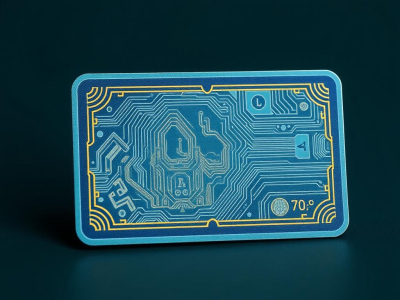
To integrate cryptocurrency into your daily financial activities, consider using prepaid cards linked to your digital wallet. These cards allow you to make payments with cryptocurrency seamlessly, simplifying transactions while maintaining the security of your assets.
When selecting a prepaid card, ensure it supports multiple cryptocurrencies and offers real-time conversion rates. This feature is crucial for managing price volatility effectively. Additionally, prioritize cards that provide robust security measures, such as two-factor authentication and fraud protection.
A well-designed guide will not only help beginners understand how to load funds onto their cards but also explain the process of making payments at various merchants. Familiarizing yourself with transaction fees associated with each card can lead to significant savings over time, enabling more efficient use of your cryptocurrency holdings.
Choosing the Right Card
Select a prepaid card that aligns with your cryptocurrency wallet. Ensure it supports the specific cryptocurrencies you intend to use, as compatibility can vary significantly among providers.
Assess the fees associated with each card. Look for hidden charges like monthly maintenance fees, transaction fees, and ATM withdrawal fees. Some cards may offer lower upfront costs but impose higher ongoing expenses.
Evaluate security features offered by the card provider. Look for options that include two-factor authentication, fraud protection measures, and secure storage of your funds. A reputable provider will prioritize user security.
Consider transaction limits imposed by the card. Some cards restrict daily spending or withdrawals, which might not suit a beginner looking to make frequent purchases or larger transactions.
Investigate payment options available with the card. Ensure it allows for a variety of payments such as online shopping, in-store purchases, and bill payments. Flexibility in usage enhances convenience.
Read user reviews and ratings on different cards to gain insight into real-world performance. Feedback from current users can highlight potential issues or advantages that are not immediately apparent through official channels.
Loading Cryptocurrency onto Cards
To load cryptocurrency onto prepaid cards, follow these steps:
- Access your card's online platform or mobile app.
- Select the option for loading funds using cryptocurrency.
- Connect your cryptocurrency wallet by following the provided instructions. This typically involves scanning a QR code or entering your wallet address.
- Choose the amount of cryptocurrency to transfer, keeping in mind any fees that may apply for the transaction.
- Confirm the transaction and wait for it to process. This can take a few minutes depending on network congestion.
The fees associated with loading funds can vary significantly between different cards and cryptocurrencies. Always check the fee structure before completing any transactions to avoid unexpected costs. Below is a comparison of common fees you might encounter:
Always ensure that your wallet is compatible with the prepaid card you choose, as certain wallets support specific cryptocurrencies only. Following these guidelines will streamline your experience in loading cryptocurrency onto prepaid cards, making payments straightforward and efficient for beginners.
Making Purchases with Cards
For beginners, using cryptocurrency prepaid cards for transactions requires understanding the payment process. Ensure your card is linked to a secure wallet that supports the cryptocurrencies you intend to use. This connection will facilitate seamless transfers during purchases.
Before making a transaction, check the associated fees. Each card may have different fee structures for loading funds and conducting transactions. Familiarize yourself with these fees to avoid unexpected costs during your purchases.
When paying at retailers, simply swipe or tap your prepaid card at the point of sale. If using online merchants, enter your card details as you would with any traditional debit or credit card. Keep in mind that some online platforms may not accept certain types of cryptocurrency cards; verify acceptance beforehand.
Security is paramount. Regularly monitor your transaction history through your wallet app. Report any suspicious activity immediately to safeguard your funds. Additionally, ensure that two-factor authentication is enabled for added protection.
If you're traveling abroad, check if your card provides favorable exchange rates and international usage capabilities. Some cards allow you to hold multiple cryptocurrencies, which can be beneficial when making cross-border transactions.
Lastly, keep abreast of updates from your card provider regarding changes in terms and services. Staying informed will help you maximize the benefits of using cryptocurrency prepaid cards while minimizing potential pitfalls.
Managing Fees and Limits
To optimize your use of cryptocurrency prepaid cards, focus on understanding the various fees and limits associated with each card. Here are specific strategies for managing these aspects:
- Review Fee Structures: Examine the fee schedule provided by the card issuer. Common fees include activation fees, monthly maintenance fees, ATM withdrawal fees, and transaction fees. Select a card with minimal costs that aligns with your expected usage.
- Compare Transaction Costs: Different cards may charge varying rates for transactions in different currencies. If you frequently make payments in a specific currency, choose a card that offers favorable rates for those transactions.
- Set Spending Limits: Many prepaid cards allow users to set daily or monthly spending limits. Establish these limits based on your budgeting needs to avoid overspending and manage cash flow effectively.
- Monitor Your Wallet Balance: Keep track of your wallet balance regularly. Some prepaid cards may impose overdraft fees or decline transactions if funds are insufficient. Staying informed helps prevent unexpected charges.
- Utilize Alerts: Activate transaction alerts to stay updated on spending and fee deductions. This feature can help identify any unauthorized transactions swiftly.
- Avoid Inactive Fees: Some issuers charge inactivity fees if the card is not used over a specified period. Ensure regular use or consider transferring funds to avoid such charges.
Selecting the right prepaid card involves thorough evaluation of fees and limits, ensuring optimal use of your cryptocurrency assets while minimizing unnecessary expenses.


You can be the first!